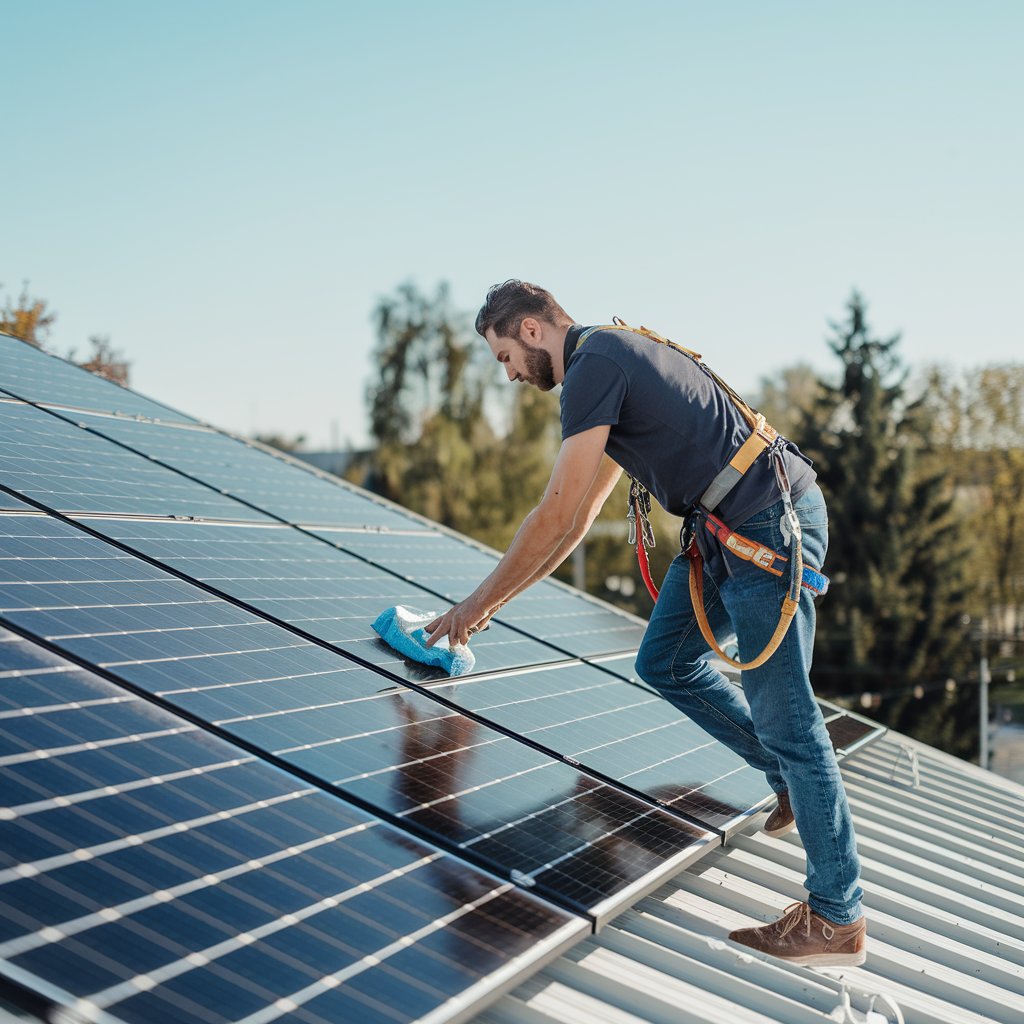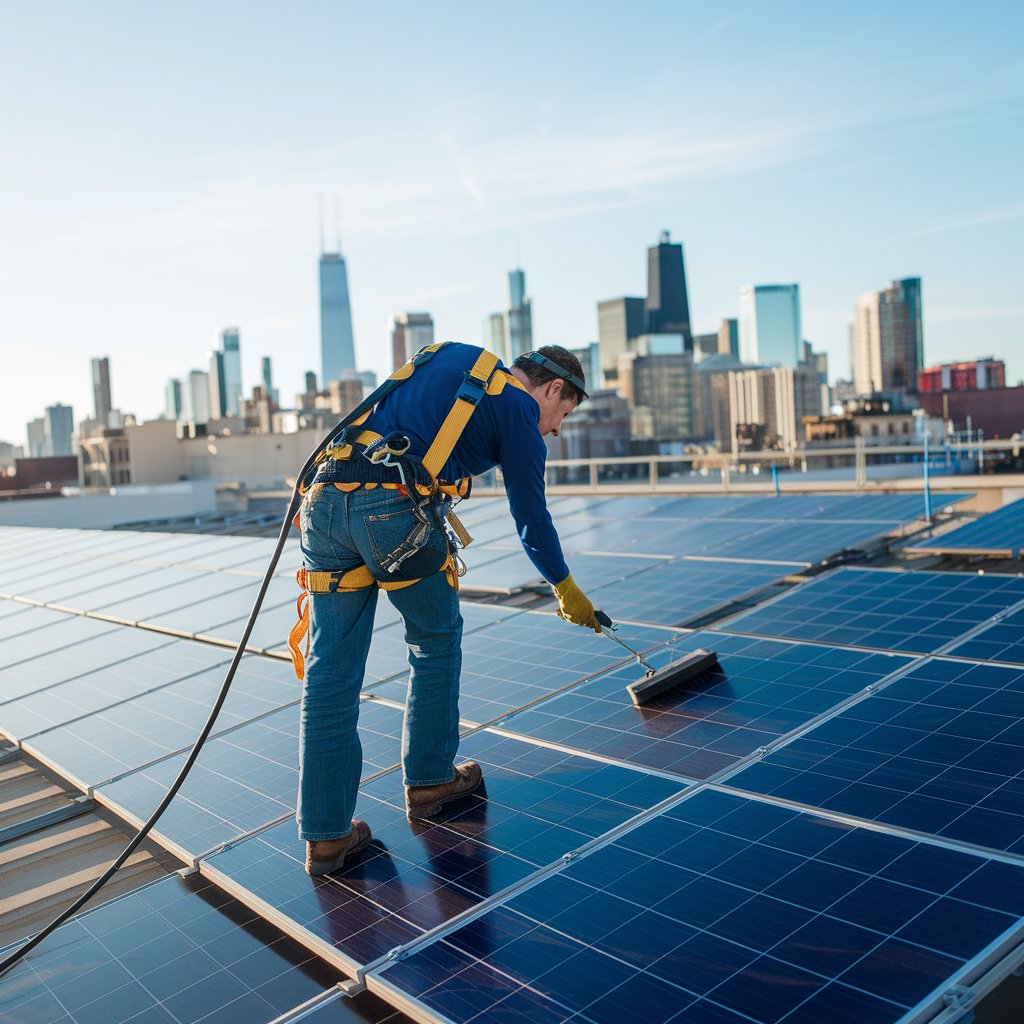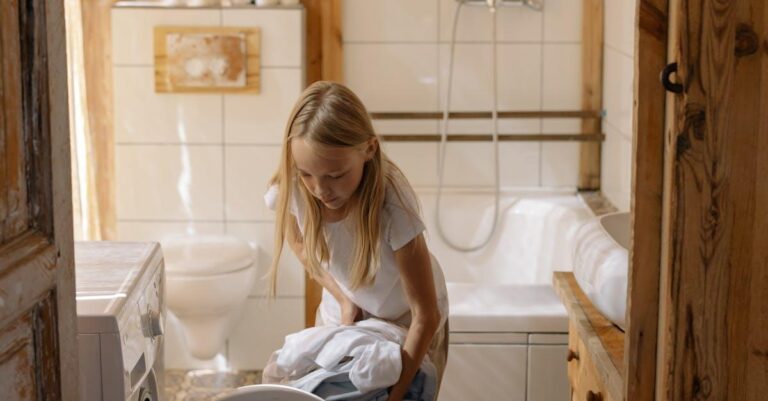Solar panels are a cornerstone of renewable energy, converting sunlight into electricity to power homes and businesses. However, their efficiency hinges on a clean surface. Dust, dirt, pollen, bird droppings, and other debris can reduce energy output by 15–25%, according to the National Renewable Energy Laboratory. This guide shows you how to clean solar panels safely and effectively—backed by expert tips and the latest best practices for DIY and professional options.
Understanding Solar Panels and Cleaning Needs
How Solar Panels Work
Solar panels use photovoltaic (PV) cells to capture sunlight and generate electricity. The glass surface of the panels is coated with an anti-reflective layer to maximize light absorption. When contaminants block this surface, less sunlight reaches the cells, reducing energy production.
Types of Contaminants
Solar panels face various contaminants depending on their environment:
- Dust and Dirt: Common in arid or windy regions, dust can accumulate quickly.
- Pollen and Organic Matter: Springtime pollen or fallen leaves can coat panels.
- Bird Droppings and Insect Residues: These sticky substances are hard to remove and block sunlight.
- Industrial Pollution and Soot: Urban panels may collect grime from nearby factories or traffic.
- Hard Water Stains: Mineral deposits from tap water can leave permanent marks.
Factors Influencing Cleaning Frequency
Cleaning needs vary based on:
- Geographic Location: Desert areas require frequent cleaning due to dust, while coastal regions deal with salt buildup.
- Seasonal Changes: Pollen in spring or snow in winter may necessitate timely cleanings.
- Panel Tilt: Panels tilted at 15° or more benefit from natural rainwater cleaning, reducing maintenance needs.
- Pollution Sources: Proximity to highways or factories increases dirt accumulation.
Risks of Improper Cleaning
Incorrect methods can damage panels or void warranties. Scratches to the anti-reflective coating, use of harsh chemicals, or excessive pressure can impair performance. Safety hazards, like falls or electrical shocks, are also concerns for untrained cleaners.
When to Clean Solar Panels
Signs Your Panels Need Cleaning
Look for:
- Visible dirt, dust, or bird droppings on the panel surface.
- A drop in energy output, often flagged by monitoring systems.
- Post-storm debris or heavy pollen after spring blooms.
How Often Should You Clean Solar Panels?
| Environment | Recommended Cleaning Frequency |
| Desert/Arid | Every 3–6 months |
| Coastal/Urban | Every 6 months |
| Rainy/Low-dust | Annually or as needed |
What Happens If You Never Clean Solar Panels?
- Neglected panels develop baked-on grime that can permanently damage the anti-reflective coating and reduce efficiency long-term. In extreme cases, you may void the warranty.
Assessing Cleaning Needs
Use energy monitoring apps or inverters to track performance dips. Conduct visual inspections after storms or high-pollen seasons. For large systems, professional assessments can pinpoint cleaning needs.
Tools and Materials for Cleaning Solar Panels
Essential Cleaning Equipment
- Soft-Bristled Brush: A long-pole brush prevents scratches.
- Squeegee: Ensures streak-free drying.
- Low-Pressure Hose: A garden hose or sprayer removes loose debris safely.
- Telescopic Pole: Extends reach for rooftop panels.
Recommended Cleaning Solutions
- Deionized or Distilled Water: Prevents mineral deposits.
- Mild Dish Soap: Non-abrasive soaps like Dawn are safe (1-2 tablespoons per gallon of water).
- Vinegar: For stubborn stains, use a 1:1 water-vinegar mix.
- Avoid: Ammonia, bleach, or abrasive cleaners that damage coatings.
Safety Gear
- Non-slip shoes and gloves for grip and protection.
- Fall protection harnesses for rooftop work.
- Safety glasses and helmets to guard against debris.
Optional Tools
- Automated Cleaning Robots: Ideal for large commercial arrays.
- Water Filtration Systems: Remove minerals in hard water areas.
- Drones: Inspect large installations for dirt or damage.
How to Clean Solar Panels: Step-by-Step
Preparation
- Choose a cool, overcast day to prevent water evaporation and streaking.
- Turn off the solar system to avoid electrical hazards.
- Gather tools and ensure safe access to panels (e.g., secure ladders).
Initial Rinse
- Use a low-pressure hose to remove loose dirt and debris.
- Start at the top of the panels and work downward to avoid re-depositing dirt.
Cleaning the Surface
- Mix mild soap with deionized water.
- Dip a soft-bristled brush into the solution and gently scrub the panel surface.
- For stubborn spots like bird droppings, let the solution sit for 1-2 minutes before scrubbing.
- Avoid excessive pressure to prevent scratches.
Rinsing and Drying
- Rinse thoroughly with deionized water to remove all soap.
- Use a squeegee to prevent water spots, working top to bottom.
- If no squeegee is available, let panels air-dry, but ensure no mineral-heavy water remains.
Post-Cleaning Inspection
- Check for streaks, remaining dirt, or water spots.
- Inspect panels for scratches, cracks, or loose wiring.
- Turn the system back on and monitor output to confirm improved performance.
Safety Considerations
Electrical Safety
Always shut down the solar system before cleaning to avoid shocks. Ensure no water contacts electrical components like inverters or wiring.
Working at Heights
- Use ladders with proper angles (4:1 ratio) and secure them to stable ground.
- Wear fall protection harnesses for rooftop panels.
- Avoid cleaning during windy or rainy conditions.
Personal Protective Equipment (PPE)
Wear gloves, non-slip shoes, safety glasses, and helmets. Choose weather-appropriate clothing for comfort and safety.
Avoiding Damage to Panels
Follow manufacturer guidelines and use only approved tools. Never walk on panels or apply excessive force, as this can crack glass or damage cells.
DIY vs. Professional Cleaning
Benefits of DIY Cleaning
- Cost Savings: Ideal for small, accessible systems.
- Flexibility: Clean on your schedule.
Limitations of DIY Cleaning
- Safety Risks: Inexperienced cleaners may fall or damage panels.
- Equipment Gaps: Lack of specialized tools for large or high panels.
When to Hire Professionals
Consider professionals for:
- Large-scale or commercial installations.
- Hard-to-reach panels (e.g., steep roofs, tall buildings).
- Persistent stains or suspected damage requiring expertise.
Choosing a Professional Cleaning Service
Look for:
- Certifications in solar maintenance (e.g., NABCEP).
- Positive reviews and references from solar owners.
- Insurance and adherence to warranty terms.
Advanced Cleaning Techniques
Automated Cleaning Systems
Robotic cleaners are increasingly used for large arrays. These systems use brushes or water jets and can be programmed for regular maintenance. While costly ($10,000-$50,000), they’re cost-effective for commercial setups.
Waterless Cleaning Methods
In arid regions, dry cleaning brushes or electrostatic systems remove dust without water. These are eco-friendly but less effective for sticky residues.
Preventive Coatings
Hydrophobic coatings reduce dirt adhesion and enhance self-cleaning during rain. Applied every 2-3 years, they cost $500-$1,000 for residential systems.
Snow and Ice Removal
Use soft brooms to clear snow gently. Avoid de-icing chemicals, which can corrode panels or harm coatings.
Environmental and Regional Considerations
Adapting to Local Conditions
- Desert Environments: Frequent dust requires cleaning every 3-6 months.
- Coastal Areas: Salt and seaweed residues need mild soap and thorough rinsing.
- Urban Areas: Soot and pollution may require vinegar solutions.
Water Conservation
In drought-prone areas, use minimal water or dry cleaning methods. Water filtration systems can recycle cleaning water.
Eco-Friendly Cleaning Practices
Use biodegradable soaps and avoid runoff into local ecosystems. Collect excess water in buckets to prevent soil contamination.
Common Mistakes to Avoid
- Using Abrasive Materials: Sponges or steel wool scratch coatings.
- Cleaning in Direct Sunlight: Heat causes water to evaporate, leaving streaks.
- Ignoring Manufacturer Guidelines: Non-approved methods may void warranties.
- Overlooking Safety: Skipping harnesses or cleaning during storms risks injury.
- Using Tap Water in Hard Water Areas: Mineral deposits can form permanent stains.
Maintenance Tips for Long-Term Panel Care
Regular Inspections
Check panels every 6 months for cracks, discoloration, or loose connections. Schedule professional inspections every 3-5 years.
Monitoring Energy Output
Use monitoring apps or inverters to track performance. A 10%+ drop may indicate cleaning needs.
Trimming Nearby Vegetation
Cut back trees to prevent shading or debris buildup, which reduces efficiency.
Documenting Cleaning Activities
Keep a log of cleaning dates, methods, and performance changes to track maintenance and improvements.
Quick Answer FAQs: How to Clean Solar Panels
Can rain clean solar panels effectively?
Rain can remove loose dust but not sticky residues like bird droppings or pollen. Regular cleaning is still necessary.
Will cleaning void my panel warranty?
No, if you follow manufacturer guidelines and use approved methods. Check your warranty terms before cleaning.
How much does professional cleaning cost?
Costs range from $150-$500 for residential systems, depending on size and location. Commercial cleaning may cost thousands.
Can I use a pressure washer to clean panels?
No, high-pressure washers can crack glass or damage coatings. Use low-pressure hoses instead.
What should I do if my panels are damaged during cleaning?
Contact your installer or a professional for repairs. Document the damage and check warranty coverage.
Conclusion
Knowing how to clean solar panels correctly can increase your energy savings and extend system life. Whether you choose DIY or pro services, cleaning should be safe, eco-friendly, and scheduled for peak performance. Inspect your panels today—and if it’s time, clean them the right way. Share this guide to help other solar users shine brighter, too.




